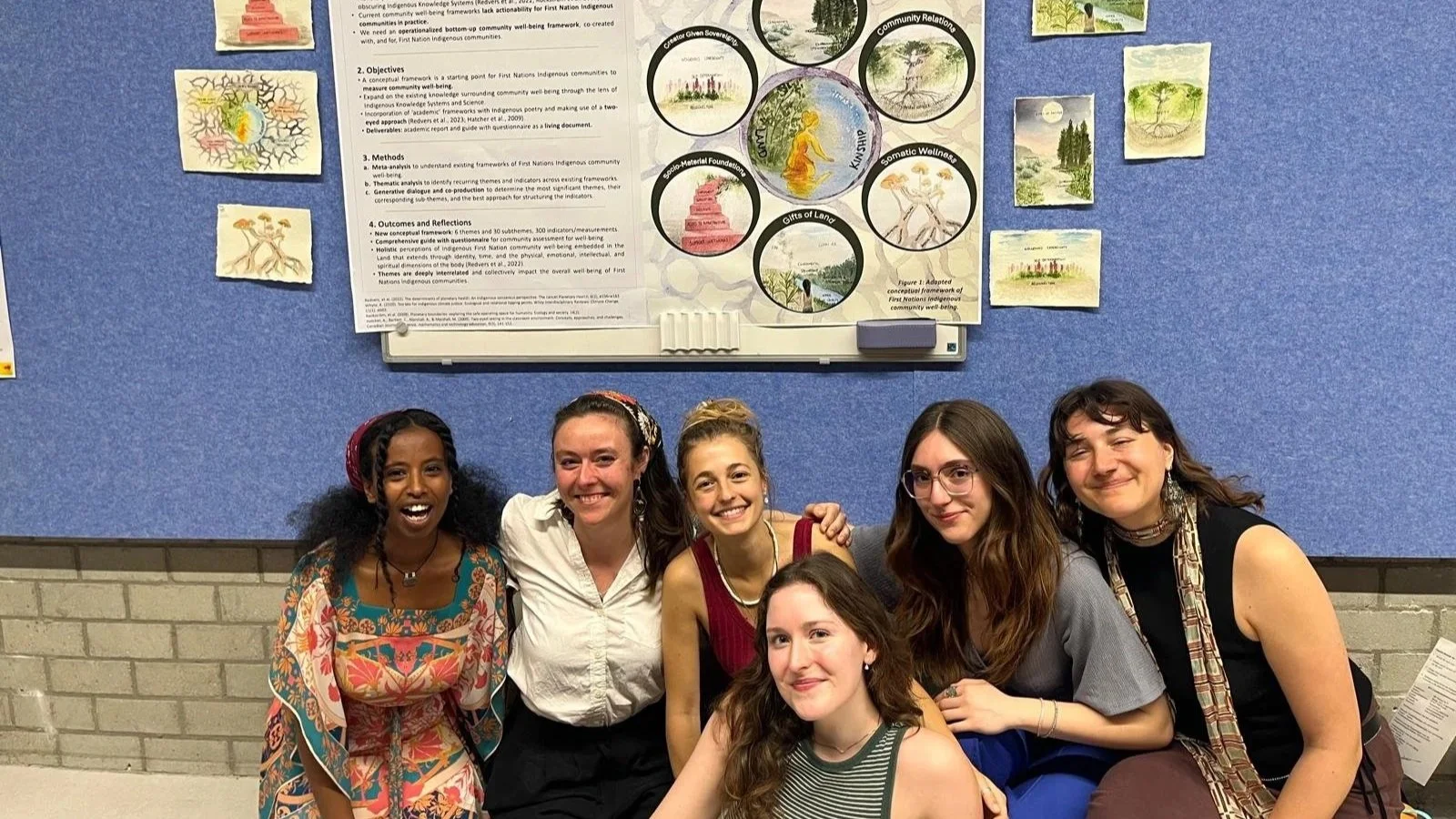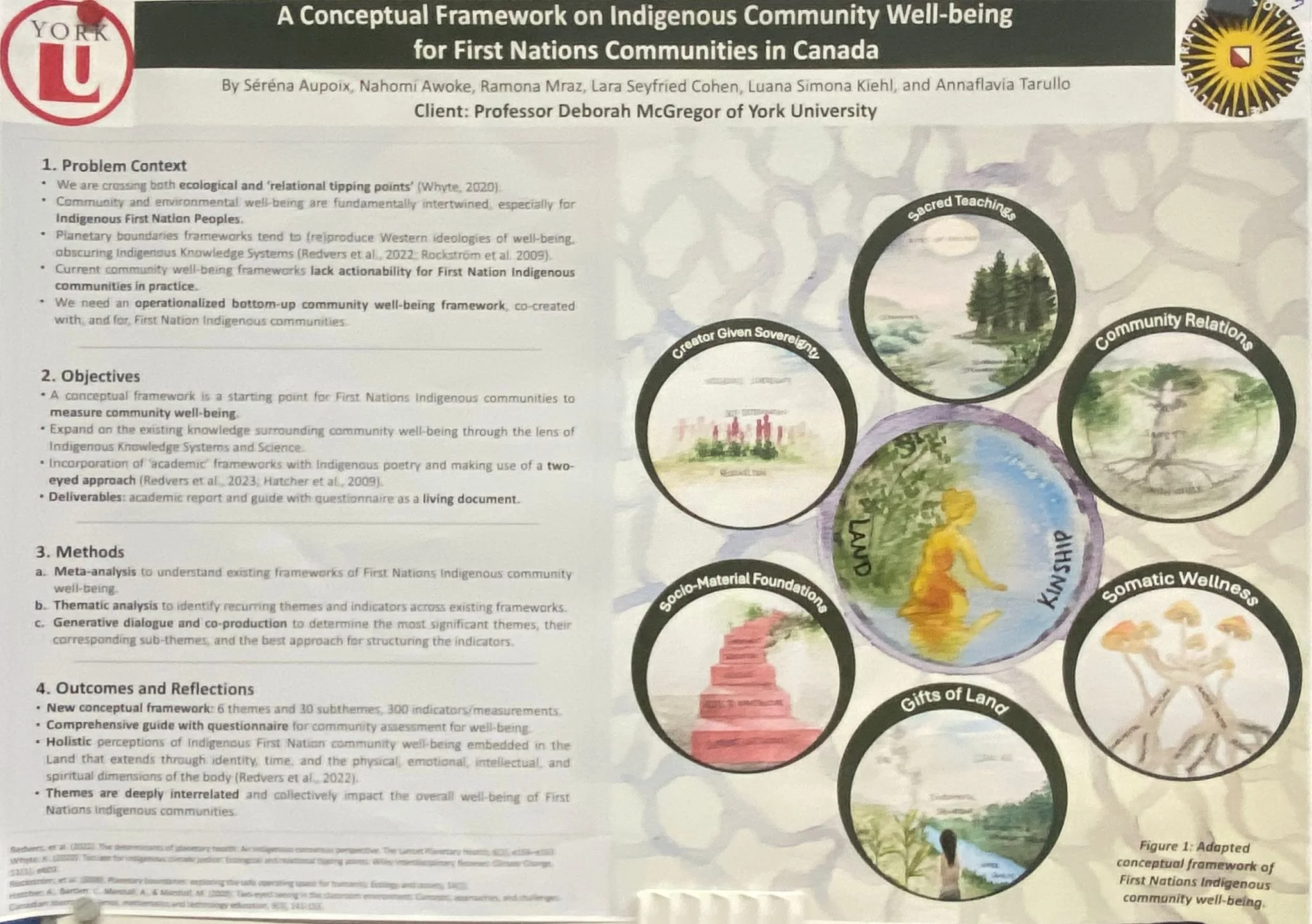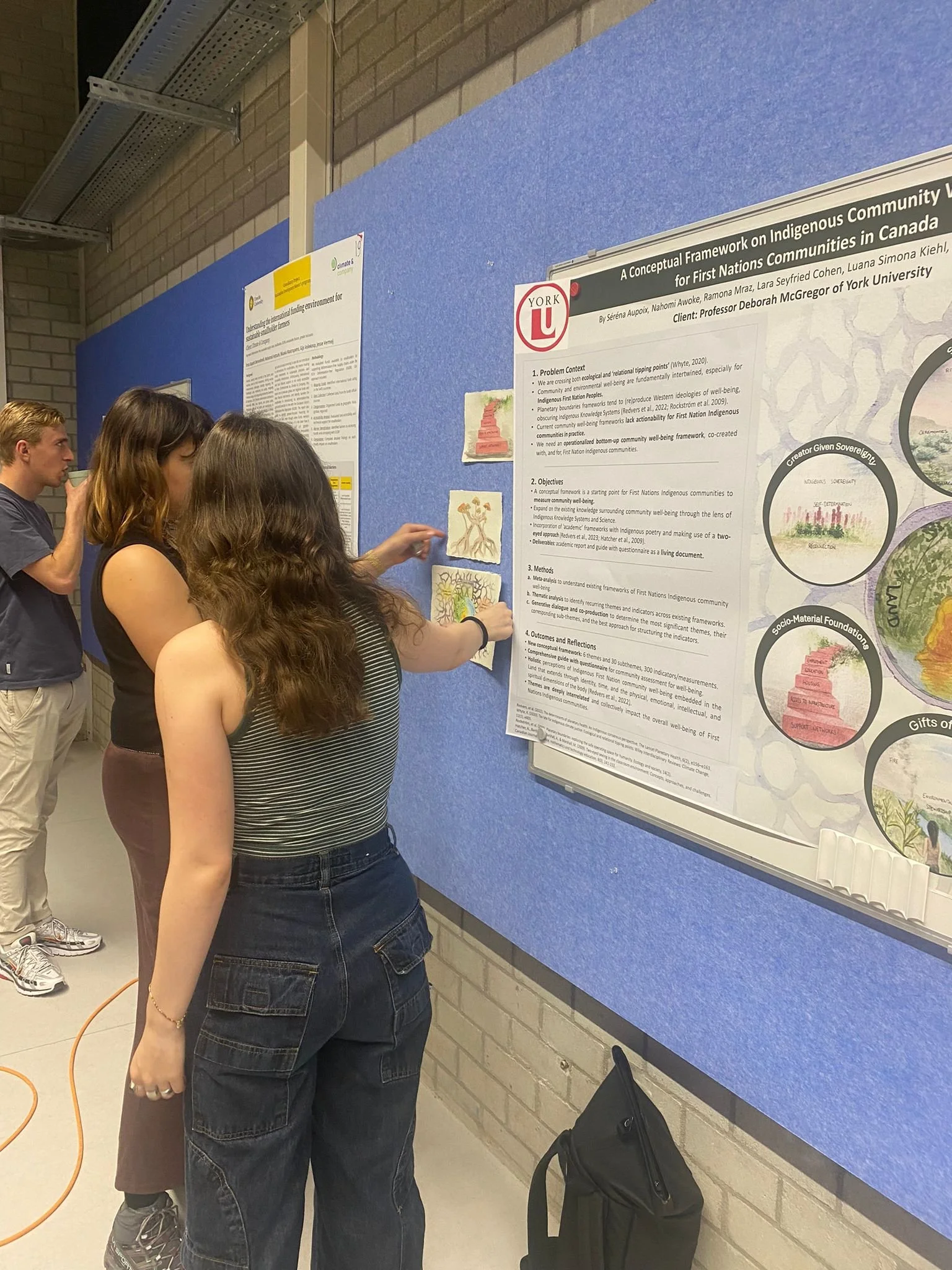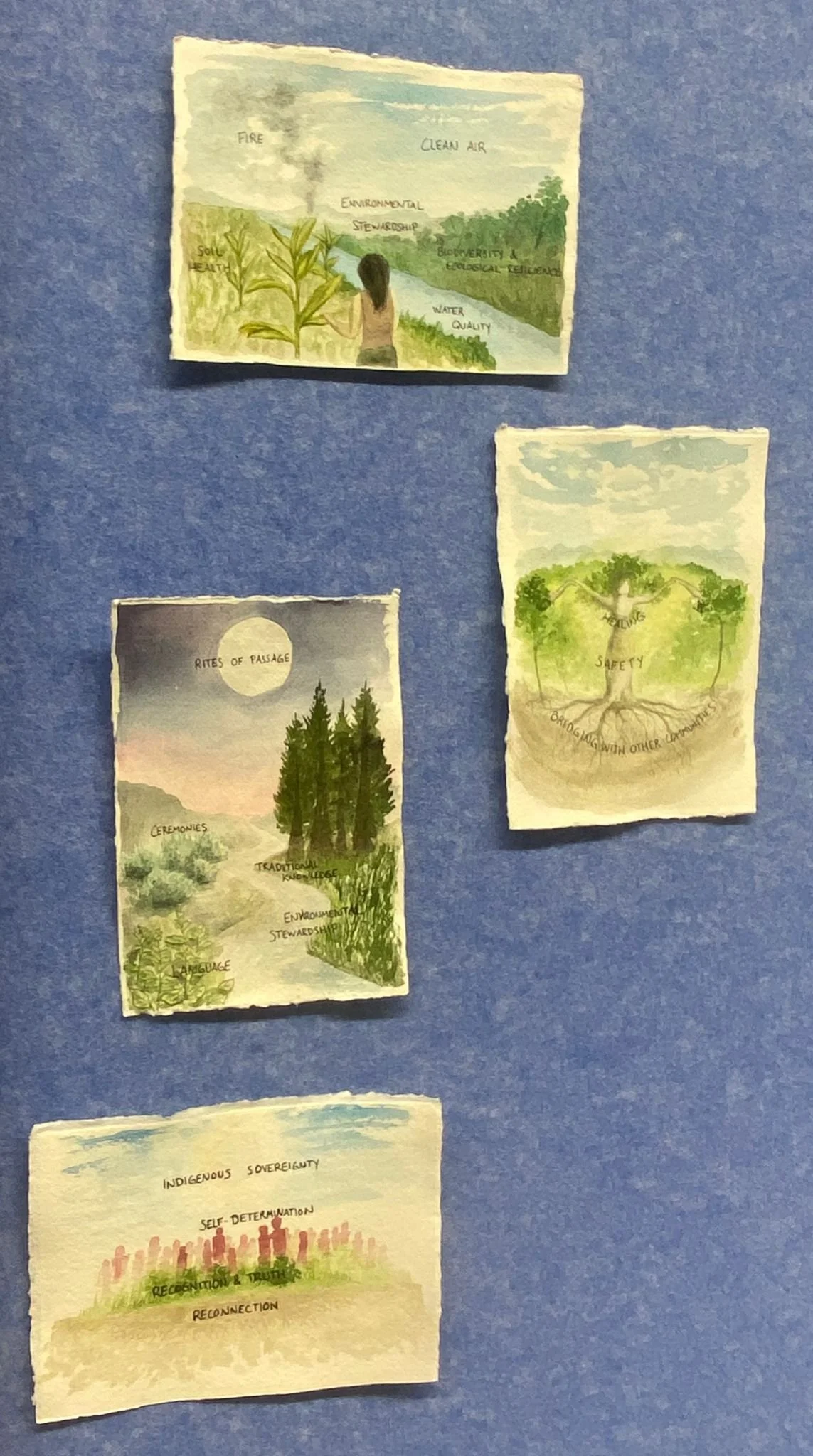Framework for Indigenous Community Well-being
Under the guidance of Dr. Deborah McGregor at York University and the Sustainable Development program at Utrecht University, Ramona Mraz, Séréna Aupoix, Nahomi Awoke, Lara Seyfriend Cohen, Luana Simona Kiehl, and Annaflavia Tarullo created a framework for Community Well-being from Indigenous First Nations Perspectives. The project included a comprehensive report and guide as well as visual framework for the assessment of community well-being indicators.
The visual components of the main framework illustration incorporates inspiration from a mycelium network, the extensive interconnecting threads, or hyphae, of fungi that act as a cohesive web connecting all parts of the ecosystem, facilitating exchange of nutrients, carbon, and even information signals via electrical impulses, similar to the neurons of the brain. The design depicts this mycelium interconnecting all the elements of community well-being, as their indicators and foundations are entangled and inseparable as part of the entire earth system, and continually changing and growing.
The design also highlights the centrality of Human-Land Kinship and reciprocity as the central source that nourishes and links all aspects of community. This relationality is ingrained in spirituality, represented by the color purple, the color associated with the Gift of Respect in the Anishinabek Nation.
In the core, the central figure represents the nurturing symbiosis of reciprocity, which encapsulates the emotional, spiritual, physical, and mental connection with the Land. The figure is represented by the various life stages, from youth to Elder, which have different roles and experiences within the community’s well-being, and whose evolution of knowledge guides the community. The reflection of the figure in the water highlights the reciprocal response of energy: the way we treat the land is a direct impact to ourselves. The colors blue and green are blended with each other and the environment, demonstrating the interwoven being of humans to the world.
Several of the names for the indicators are inspired from the Anishinaabe framework for Traditional governance: “Gifts of Land,” “Creator-Given Sovereignty,” and “Sacred Teachings”. The conceptual idea of this framework also threads many other aspects of the Indigenous lived experience that determine community well-being. Equality across gender, sexuality, race, age are inseparable from community well-being, and the love and support of the community that upholds this equality is central to maintaining its structure. Although it is simply one perspective of understanding community well-being, the design may help to understand these aspects of community well-being in creative and diverse ways.
The 6 indicators’s visual framework designs further incorporate elements and symbolism from First Nation’s traditional knowledge, and offer a visual method of understanding elements of community well-being. The report also included other diagrams and poetry in addition to a indicator based questionnaire for communities to use to assess community well-being in measurable and actionable ways.
Artwork Illustrations designed by Ramona Mraz








